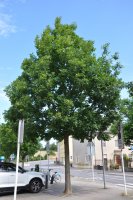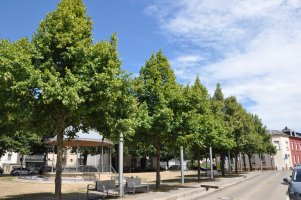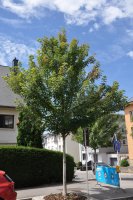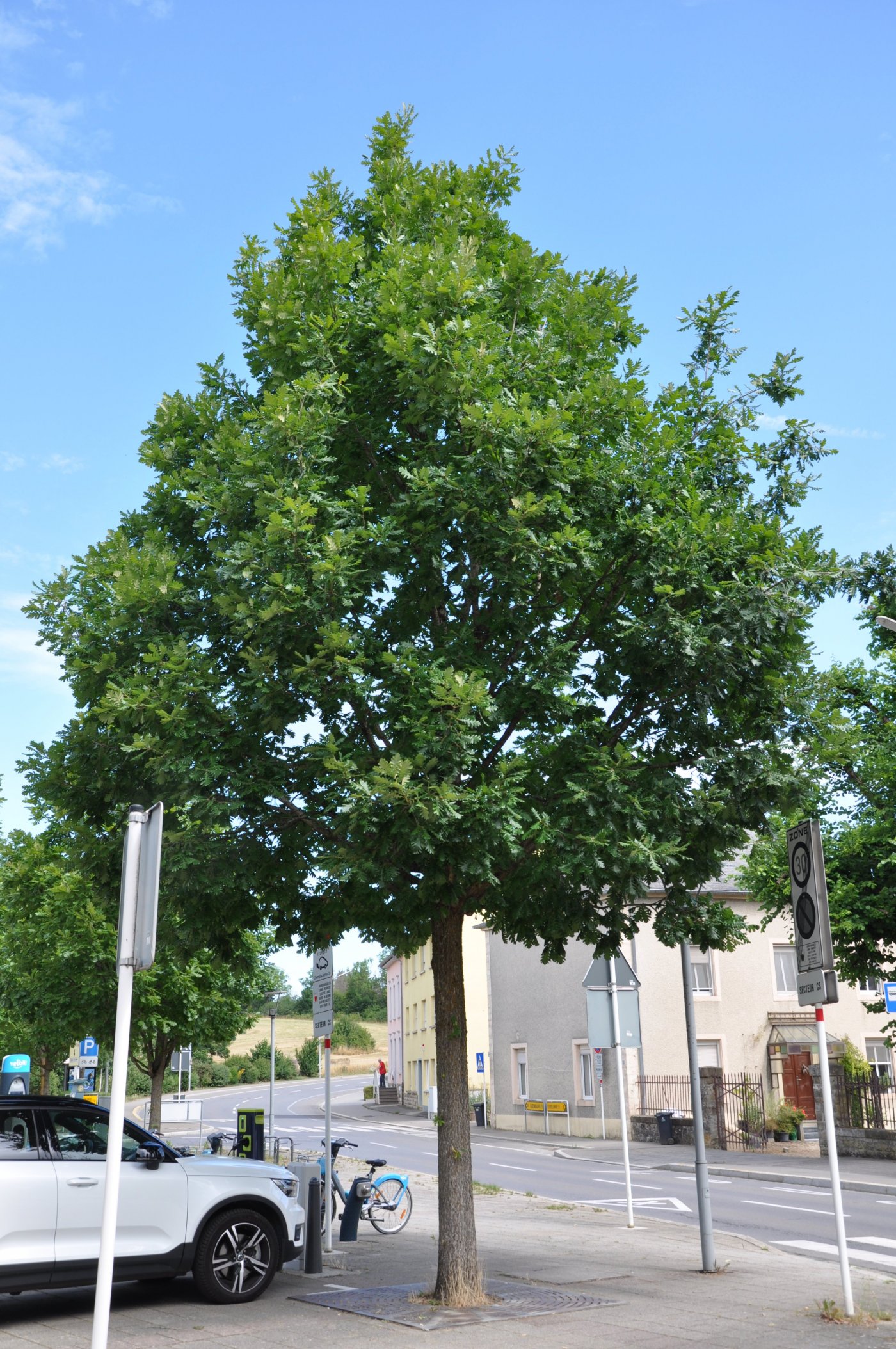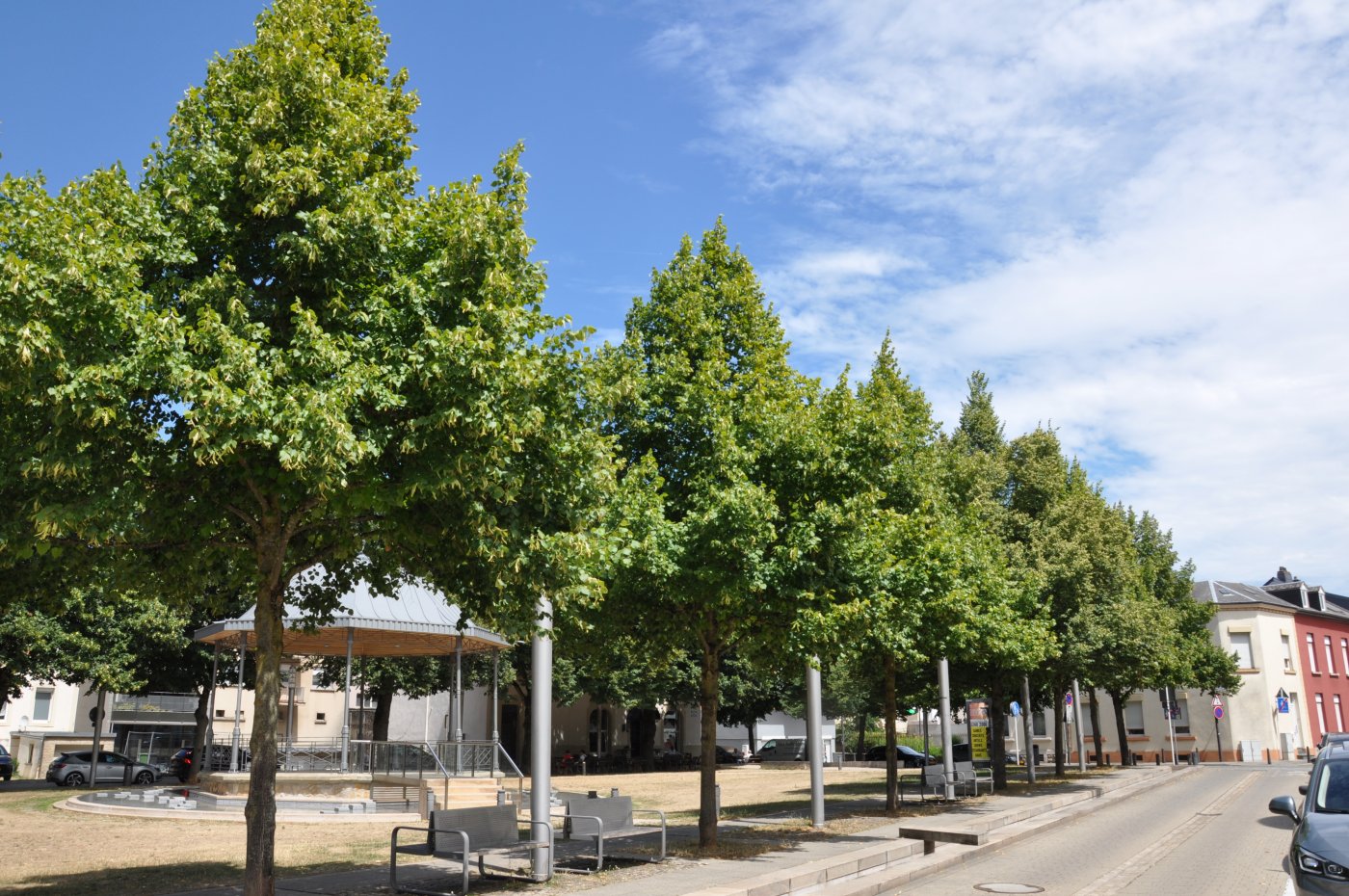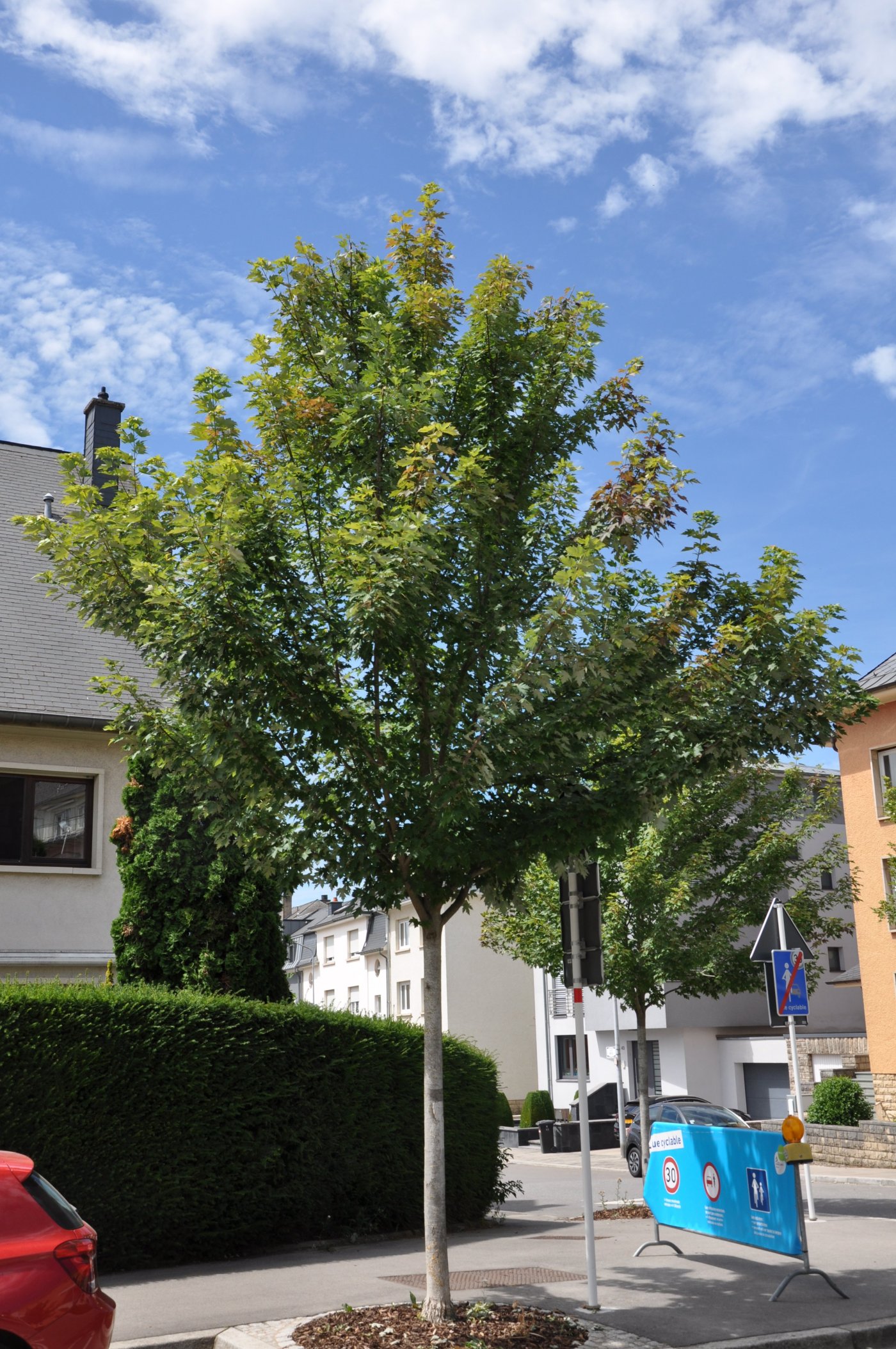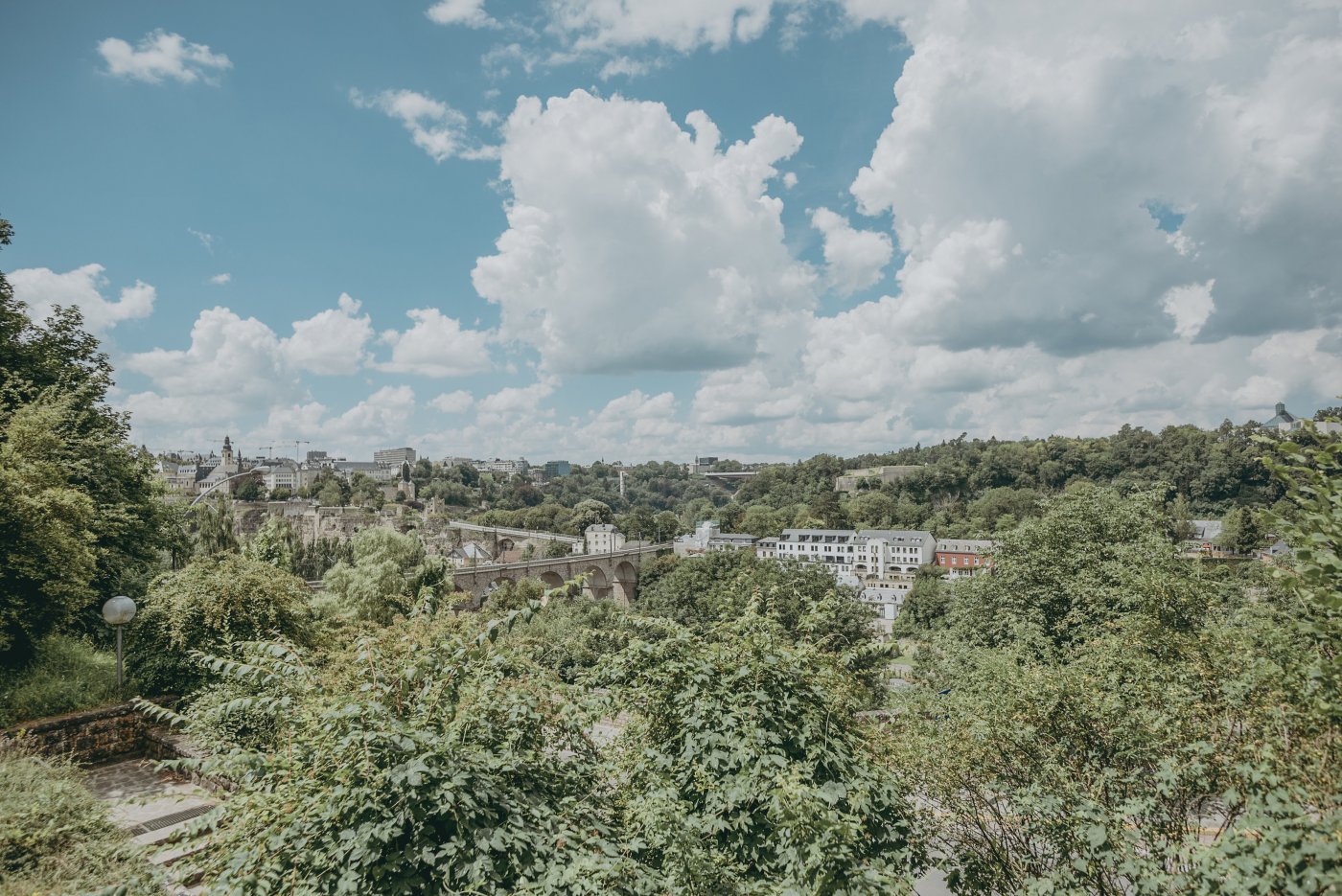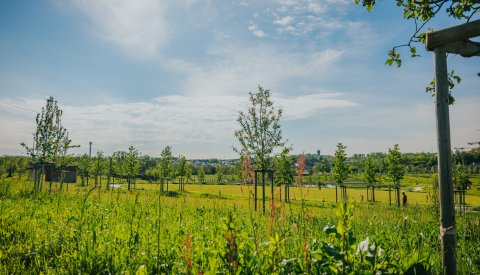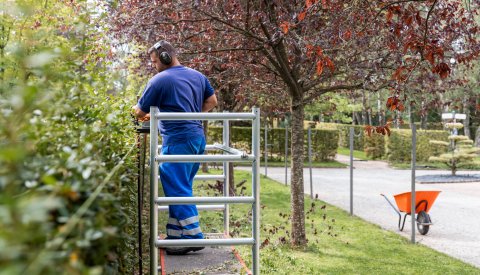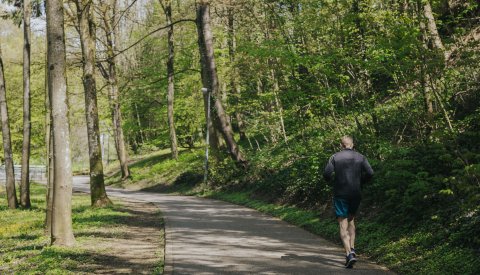Summary
The concept of "trees for climate change" has become incredibly important today. But this term does not refer to the plant's capacity to stop climate change. Instead, it is about the properties of the tree that enable it to adapt to climate change. "Trees for climate change" are trees that can survive the increasing number of weather phenomena, referred to collectively as climate change or even extreme weather conditions, either better or more unscathed than our native varieties. Our native trees struggle with intense heat and drought (especially the European beech, Fagus sylvatica and the spruce, Picea abies), to mention only the more well-known species.
Tree varieties
Large-scale trials have been underway in many European countries (such as France, Switzerland, Germany and Denmark) for nearly two decades now in an attempt to identify species of tree that are suitable for lots of different purposes, in particular as street trees.
Sometimes, two or even three decades can pass between a tree being trialled and it subsequently being declared a so-called "tree for climate change".
Some are native species, e.g. our small-leaved lime (Tilia cordata) and lime hybrids (Tilia x europaea), English and sessile oaks (Quercus robur, Quercus petraea), the field maple (Acer campestre) and all horticultural species and cultivars derived from them.
Non-native species include, in particular, the Turkey oak (Quercus cerris), southern hackberry (Celtis australis), honey locust (Gleditsia triacanthos) and many others.
However, trees for climate change are not the only ones that can still be used safely in the city today. In Luxembourg City, there are areas with copper beeches (Fagus sylvatica), for example, which are not in the sun all day and grow well.
Some examples of trees for climate change
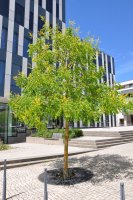
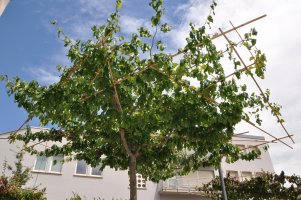
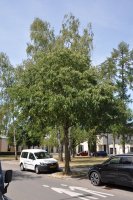
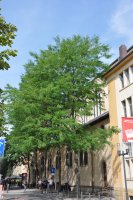
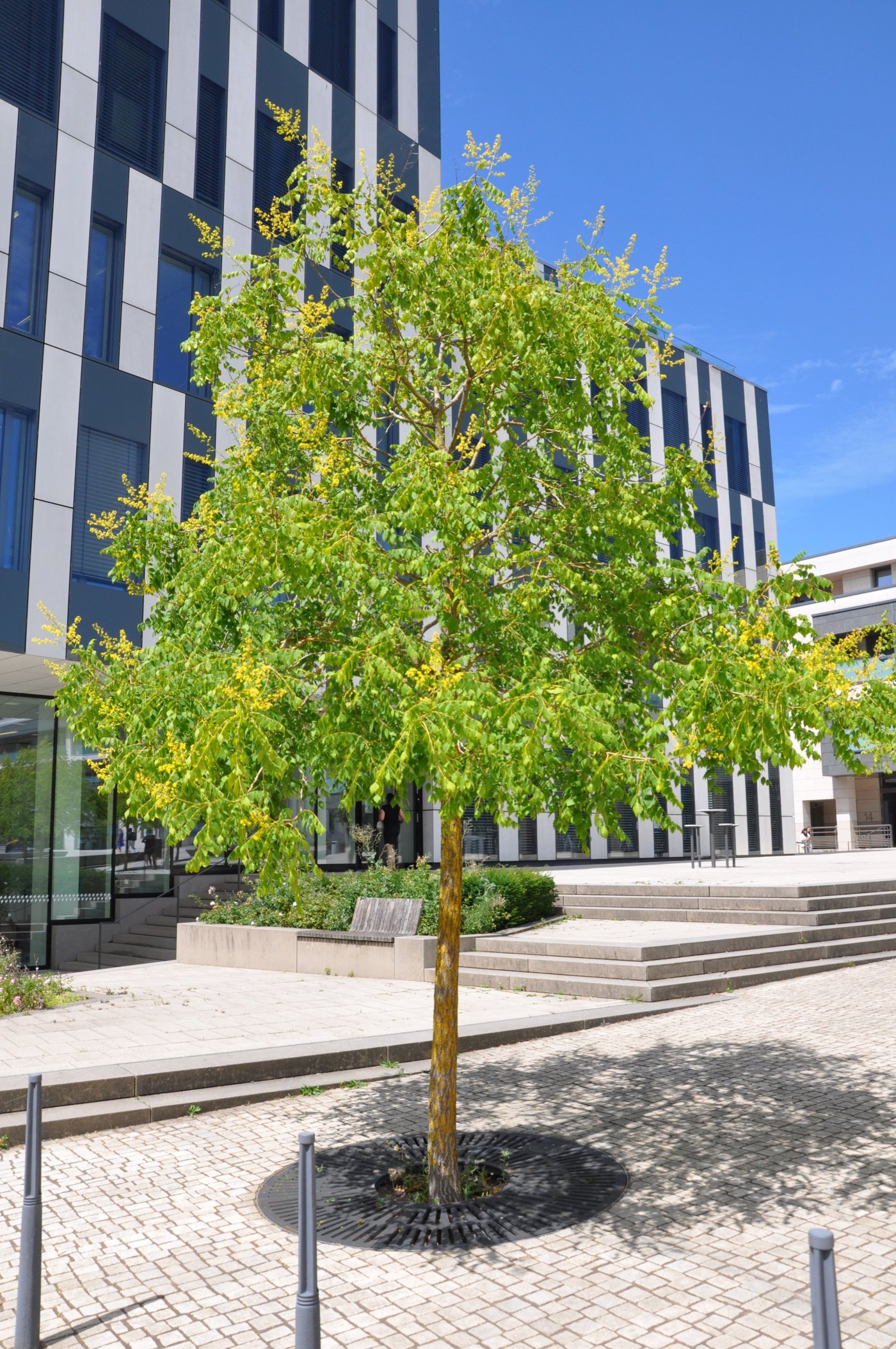
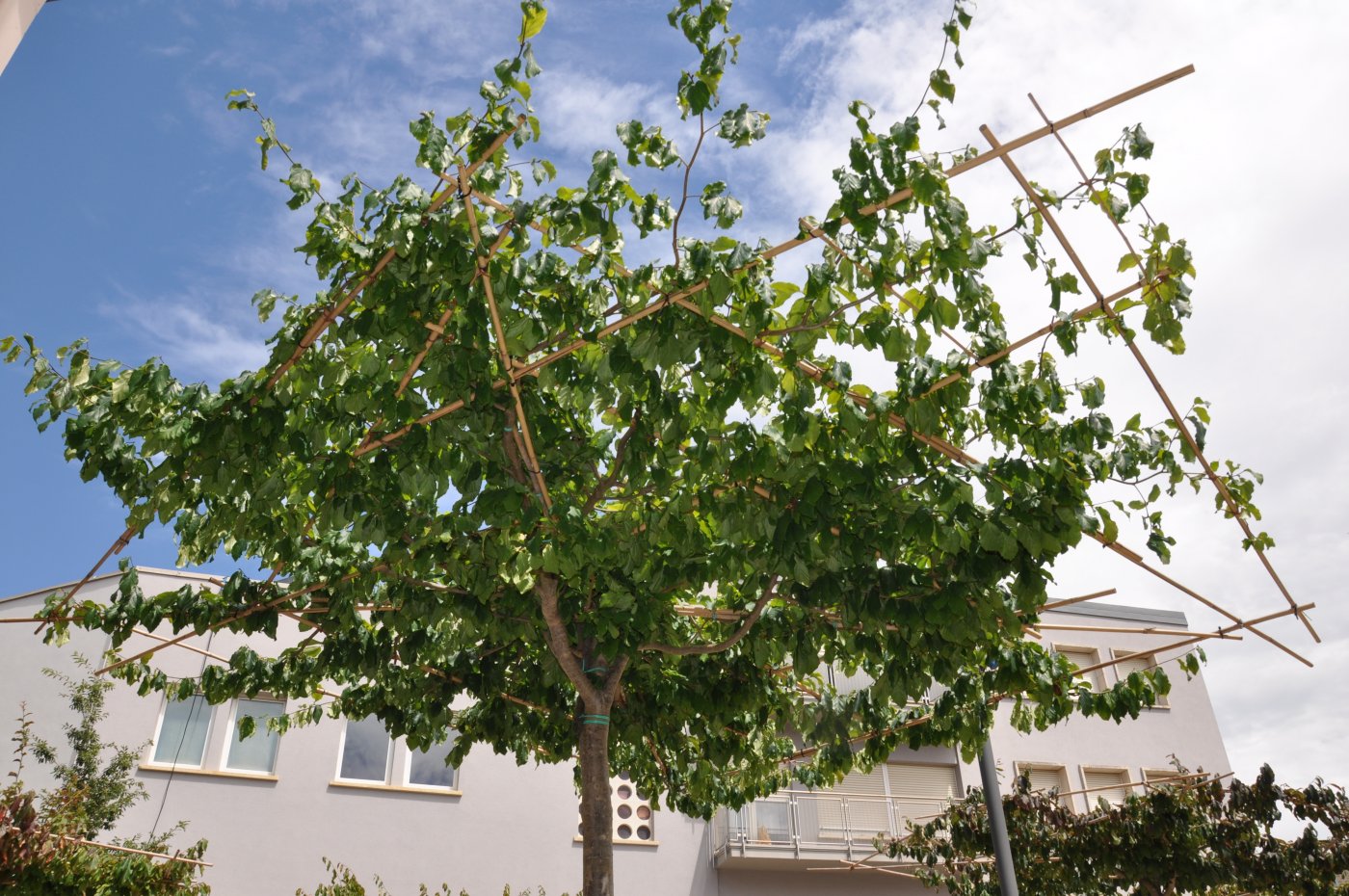
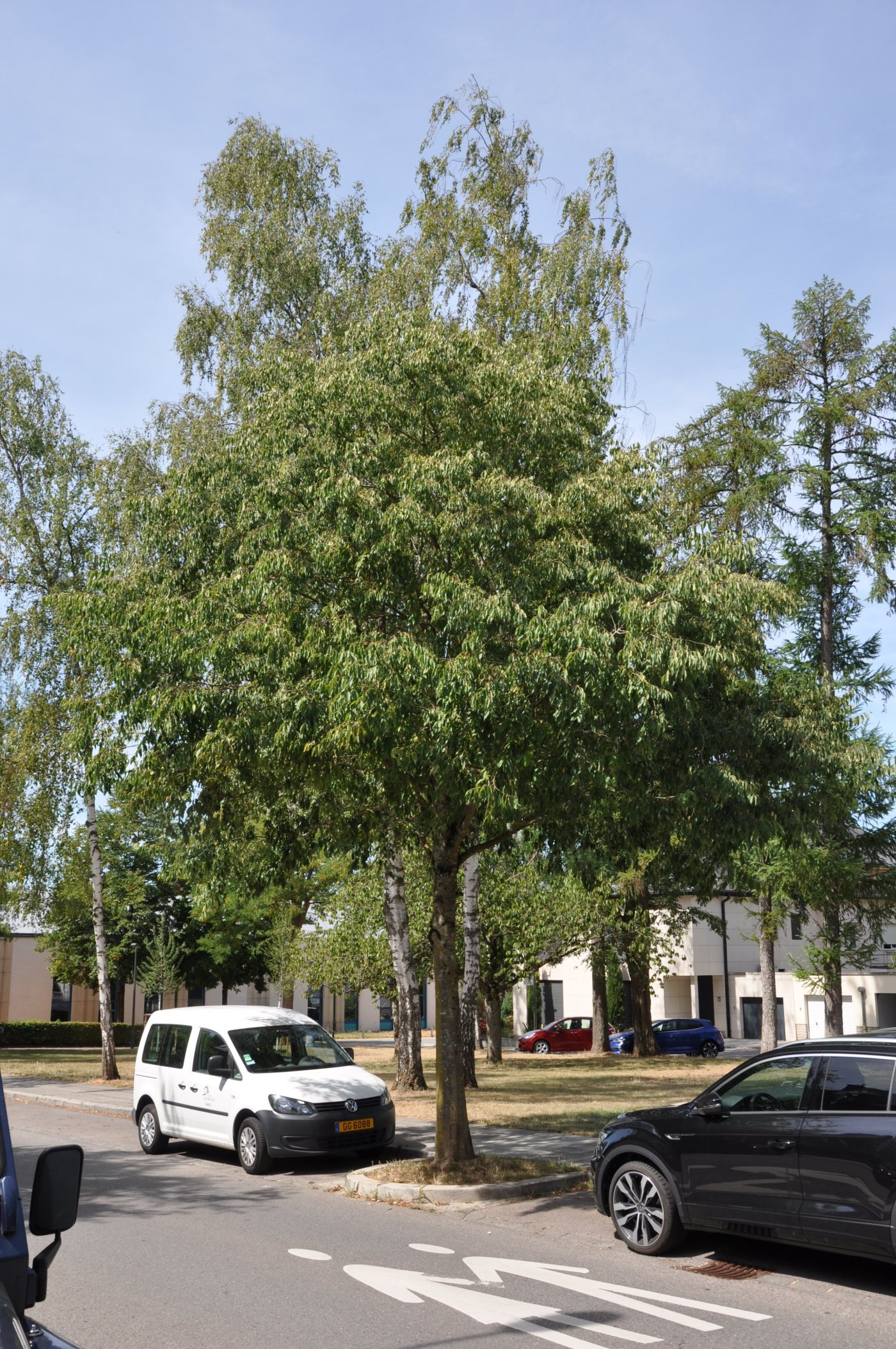
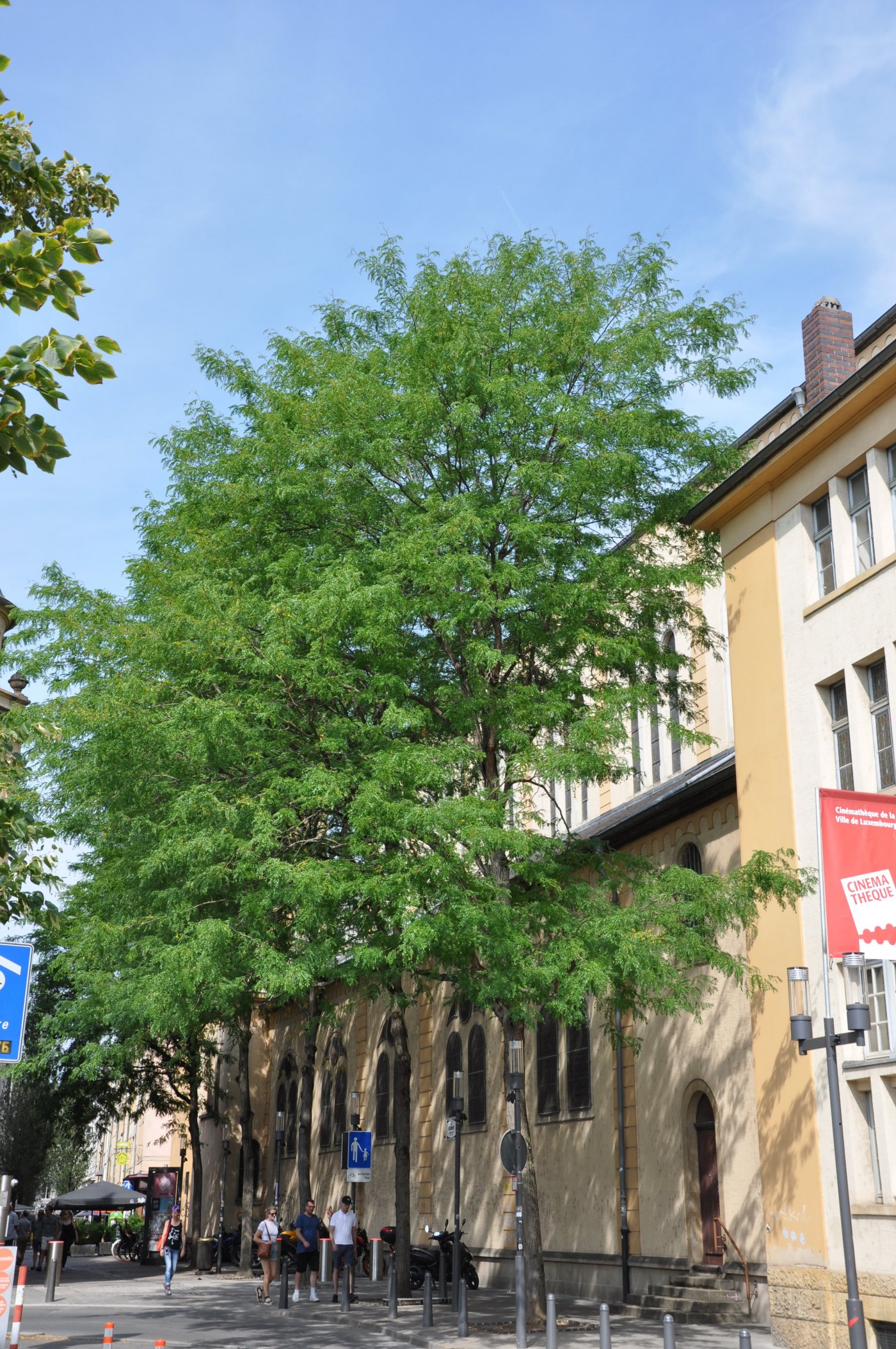
Drought stress
Unprecedented temperatures extremes were recorded as early as during the summers of 2003 and 2013, but since the summers of 2018-2022, the discussion around climate change has become more urgent than ever before. The drought damage to trees in the summer of 2022 is already causing many failures in weaker trees, which will have an impact over years to come.
In trees, drought stress refers to the stress caused by a lack of water. Drought stress is exhibited in different ways, as trees are living organisms that use different strategies to cope with a lack of water. Different tree species deal with drought stress differently, depending on e.g. basic genetic make-up, adaptation, tolerance, endurance and avoidance.
Key drought stress factors
The period in which the dry season occurs in spring and summer is problematic. A dry period of more than 4 weeks without any supply of water is damaging to many tree species.
The combination of this and other stress factors such as the heat and frost conditions in the soil, which primarily affect water retention capacity and oxygen supply in the root layers, and also the intense sunlight, which is increasingly causing damage to trees and leaves, puts a strain on trees.
There are also other factors such as the depth of the water shortage in the soil, the accessibility of the groundwater table, the dryness of the air in an urban area, the age of the tree, previous diseases and fungal infestation, and even the location, such as within tree grates in the urban area, raising the question of the space available for the roots and the water supply.
Another very important factor that is often forgotten or neglected is the impact of road gritting on street trees. Sodium chloride (NaCl) destroys the soil structure, the so-called colloidal complex. Although gritting in winter is not a direct trigger of drought stress, it is an important factor in the process and in its concentration. It is an antagonist of calcium and especially potassium, i.e. it prevents their absorption into the plant tissue. Potassium and magnesium are essential for the water balance in plants. This manifests itself in sensitive trees with clear marginal leaf necrosis (brownish edges).

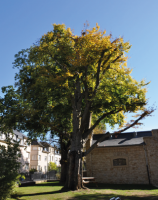
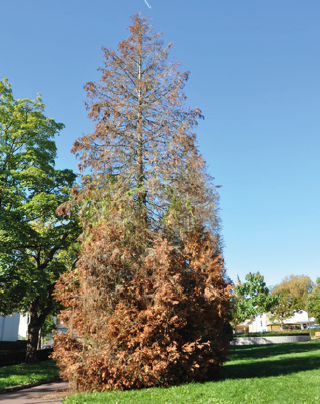
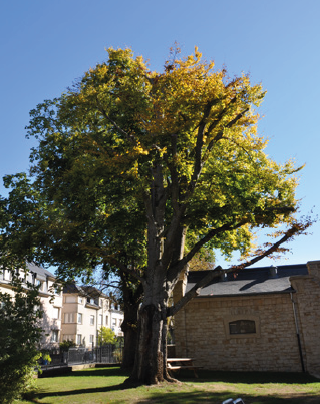
Tree varieties for the future
There are now many studies, lists and also planting campaigns in cities to determine the most suitable tree species in cities.
There is now a climate species matrix in Germany called KLAM which is also used in the Netherlands (e.g. tree nurseries). This matrix rates trees according to their suitability for drought tolerance and winter hardiness using a points system.
Winter hardiness is crucial, as more and more tree species from more southerly climes are coming into cultivation. These have good drought tolerance but are not necessarily suitable for our winters.
It should also be kept in mind that the location (street – green area) and the micro-climate it produces have a small to medium effect on whether planting is successful.
It is important to understand that not every "tree for climate change" will grow well in every location!
Example
The oriental plane tree (Platanus orientalis) is native to the area from southern Europe to the western Himalayas. It has a high drought tolerance but winter hardiness is problematic. This means that it can freeze in extremely cold winters. It is often how long low temperatures last, not how low they reach, that makes the crucial difference. This similarly applies to drought.
Selecting new tree varieties
In future, it will be important to ensure healthy mixed planting that includes both trees for climate change and native species.
On Rue Anatole France, mixed planting has been carried out for the first time. Previously, entire streets were planted with just one type of tree in order to ensure an aesthetic appearance thanks to uniform crown development and even growth, and also to make pruning simpler. One of the disadvantages, however, was that if one tree was affected by a disease, it would spread to all trees of the same species.
This is why, in future, attempts will be made to plant streets with several tree genera and species, as has recently been the case on Rue Anatole France.
Trees for climate change in Luxembourg City
Quercus (Oak)
Quercus is the Latin name for oak. Oaks are a truly enormous botanical family belonging to the beech genus (Fagaceae). In a good location, they can live for over a thousand years. Oaks are found all over the world – from North America to Mexico, from the Caribbean to Colombia and Central America, and from Eurasia to North Africa.
Oak wood is a very popular, high-quality and durable material.
Oak is also a drought-resistant species; this includes the English oak (Quercus robur), sessile oak (Quercus petraea), Turkey oak (Quercius cerris) and Hungarian oak (Quercus frainetto).
Tree register: the total number of oaks in Luxembourg City (all species and varieties) is 1,765.
Tilia (Lime)
The name "Tilia" comes from the Greek "tilos" and means fibre. The bark fibres were once used in the production of footwear and ropes.
The small-leaved lime tree (Tilia cordata), also known as the small-leaved linden or pry tree, from the mallow family (Malvaceae, subfamily Tilioidaea), is native to Europe and can live to be well over 500 years old. The flowers provide plenty of nectar for the famous lime blossom honey.
The main use of lime wood is in sculpture, carving and wood-turning.
In various trials, the lime tree has been shown to be a species that is well adapted to dry soil and that can also withstand longer periods of heat.
Tree register: the total number of lime trees in Luxembourg City (all species and varieties) is 2,213.
Acer (maple)
The maple (Acer) from the soap tree family (Sapindaceae) is widespread in Eurasia, North Africa, and Central and North America.
Tree register: the number of maple trees in the city is 3,372.
Some trees are maintained by the Luxembourg State authorities.
